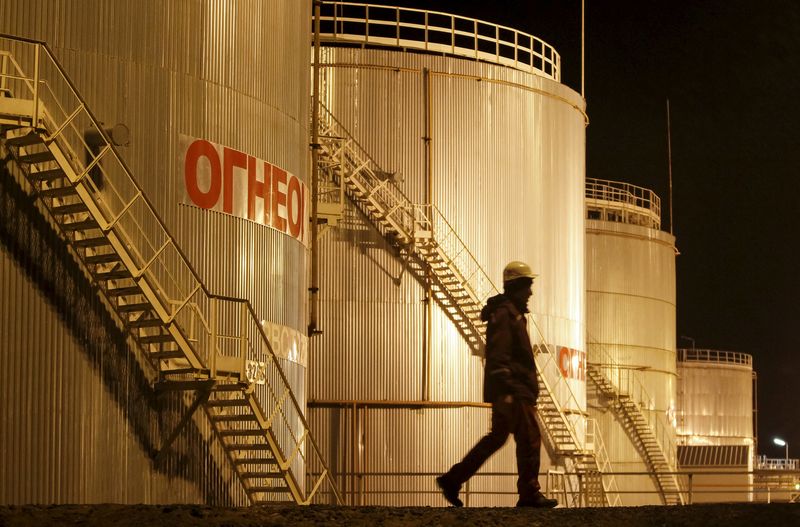Oil prices rise, but still set for weekly losses on demand jitters
Oil prices firmed Friday, helped by some bargain buying, but were still headed for weekly losses amid persistent concerns over slowing demand.
At 08:50 ET (12:50 GMT), Brent oil futures rose 1.6% to $78.41 a barrel, while West Texas Intermediate crude futures gained 1.8% to $74.31 a barrel.
The crude market is ending the week on a positive note, but it has been a difficult period with both contracts still set to lose around 2% on concerns of waning global demand. Oil heads for weekly losses on demand fears
Oil markets were rattled by data showing a sharp downward revision in U.S. payrolls, which pushed up concerns over a potential recession in the worlds largest economy. These were added to concerns about a slowing economy in China, the largest crude importer.
Morgan Stanley has illustrated these worries, lowering its forecast for global oil demand growth in 2024 to 1.1 million barrels per day from 1.2 million barrels per day.
The bank attributed this revision to several factors, including slower economic growth in key markets, increased adoption of alternative energy sources, and evolving global economic conditions.
China's economic growth has been slower than anticipated, significantly impacting its oil consumption. As one of the largest consumers of oil globally, this slowdown is a critical factor in the downward revision.
The proliferation of NEVs in China, now making up nearly 50% of all new car sales, is further eroding gasoline demand. “The displacement of diesel by LNG trucks has reduced China's oil demand growth this year by another 100-150 kb/d, we estimate,” the analysts said. Supply glut fears
Losses in crude came even as traders saw an increased chance of an interest rate cut by the Federal Reserve in September.
While U.S. demand appeared strong in the near-term, as reflected in government data showing an outsized drawdown in inventories, traders feared that worsening economic conditions could stymie demand in the coming months.
Fears of an oil supply glut were also in play, after U.S. oil production rose to a record high of over 13 million barrels earlier in August.
Additionally, the Organization of Petroleum Exporting Countries and allies, a group known as OPEC+, has plans to raise output later this year.
The cartel had recently trimmed its outlook for global oil demand, citing concerns over weak demand in top oil importer China. Israel-Hamas ceasefire in focus
U.S. officials said that a ceasefire between Israel and Hamas was close, although media reports said that Israel and Hamas were less confident over an agreement.
Israel had earlier this week reportedly agreed to a bridging agreement proposed by the U.S.
But Hamas had criticized the agreement for allegedly favoring Israel.
The Israel-Hamas conflict has kept traders attaching some risk premium to oil prices, on the prospect of supply disruptions caused by a spillover in the conflict. But conflict has so far had a limited impact on actual crude supplies.
(Ambar Warrick contributed to this article.)
Source: Investing.com
